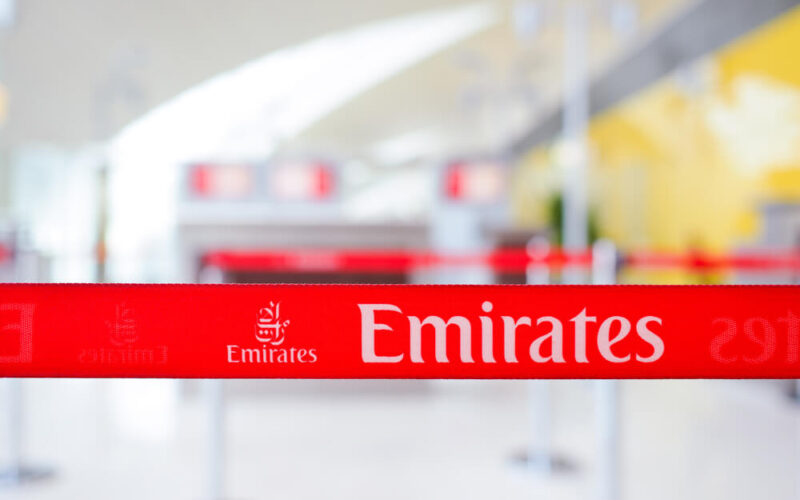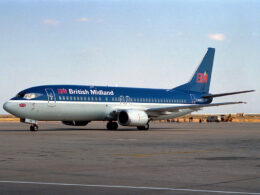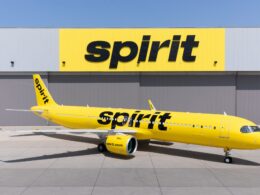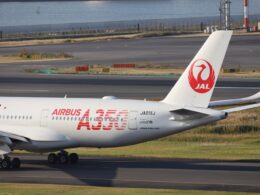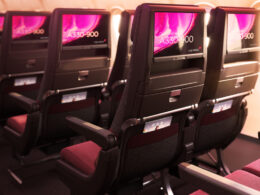This article was originally published on June 16, 2020.
Prior to the coronacrisis, the Dubai-based Emirates Airlines was on top, regarded as one of the most luxurious and best passenger experience-wise carriers in the world. But the COVID-19 pandemic turned its fortunes upside down, as the all-wide-body operator had to pull straws to generate some type of revenue. The pandemic revealed the weaknesses of an all-international network with a global mega-hub business model. Yet the crisis could also lend a helping hand for the Gulf carrier, as it, just like everybody else, looks forward towards a post-crisis world.
At the forefront of discussions about Emirates’ future is, of course, its fleet. The Boeing 777 and Airbus A380 operator, despite its relatively low aircraft number compared to the largest airlines in the world, finished the 2019 fiscal year with 367.1 billion Available Seat Kilometers (ASK). In comparison, American Airlines (A1G) (AAL) , the largest airline in terms of its fleet size, finished 2019 with 400 billion ASKs (248.8 billion Available Seat Miles) on its mainline operations. The DXB-based carrier had 270 aircraft at the end of 2019, while the DFW-based American finished the year with 956 aircraft in its mainline operations. International Airlines Group (IAG) (IAG), a multi-national airline group, based in several European countries with short-haul and long-haul operations, finished the same year with 337.7 billion ASKs, with 598 aircraft.
The capacity that Emirates can carry onboard its aircraft, combined with its route network, is massive. But amidst a capacity crunch and crumbling travel demand, the massive capacity can backfire, well, massively. Especially when the airline has to continue making payments on such aircraft as the A380, which according to Airbus, has a list price of $445 million.
Questionable resale value
There is no secret that even prior to the breakout of COVID-19, the second-hand market for the Airbus A380 was very questionable. The first Super Jumbo that had been delivered to Singapore Airlines (SIA1) (SINGY) (registered (9V-SKA) was already scrapped after it was moved to Tarbes–Lourdes–Pyrénées Airport (LDE) in France. The only A380 that found a second home was another ex-Singapore Airlines (SIA1) (SINGY) double-decker, belonging to Hi Fly Malta, an Aircraft, Crew, Maintenance and Insurance (ACMI) company based in the Mediterranean island. While the deal with the owner of the asset itself, Doric Aviation, is locked in a chamber behind nine locks, an assumption can be made that it was a per-block-hour deal, where the ACMI operator pays the lessor as much as it uses the asset itself.
The perspective of having a 115-strong fleet with eight more Airbus A380 aircraft coming in, with no chance to resell them, sounds very grim.
On the other hand, with airlines like Air France or Lufthansa (LHAB) (LHA) getting rid of their young double-deckers and no second-hand demand showcased prior to the COVID-19 pandemic, this could be a small, yet still a saving grace for Emirates.
While the airline does, reportedly, plan to downsize its A380 fleet and has started employee layoffs, it is not like the carrier can just get rid of almost half of its fleet. Out of the total 270 aircraft at Emirates, 115 are A380s. Emirates has three aircraft types on order: the Boeing 777X, which is still not certified, and the Boeing 787 and Airbus A350, with 115, 30 and 50 units on order, respectively. The 787 and A350 will be delivered to the airline starting in 2023, with the folding-wingtip wide-body still in certification limbo before Boeing can determine its delivery date.
Still running
Before the newly ordered aircraft can arrive, Emirates will still need to operate some percentage of its A380 fleet, as demand for air travel will return in one shape or the other. In addition, its current Triple Seven fleet is shrinking. The airline had six fewer Boeing 777 aircraft in FY2020 than compared to the previous fiscal year. Possibly, the double-decker fleet will also shrink, but it will remain stable in the short-term. The president of the airline Tim Clark stated that “only three aircraft will exit” Emirates’ fleet. Clark also assured that while maybe not today, but in two years’ time, “there will be a place for it [the A380 – ed. note] and I think it is going to be extremely popular,” said Clark in an interview with the Financial Times in May 2020.
The non-existent secondary market for the A380, coupled with accelerated retirements of the type from other airlines, could provide Emirates with a way to save money on aircraft parts and spare engines, as barely anyone else would need these, often overlooked, assets. While they would not improve the liquidity of the airline, it could help it burn less cash in a period of a downturn: something that Clark himself expects, as he stated that some sense of normality would return by either 2022/23 or 2023/24.
UPDATE June 18, 2020, 09:34 (UTC+3): Fixed factual information about American Airlines (A1G) (AAL) ‘ Available Seat Kilometers (ASK) in 2019.





